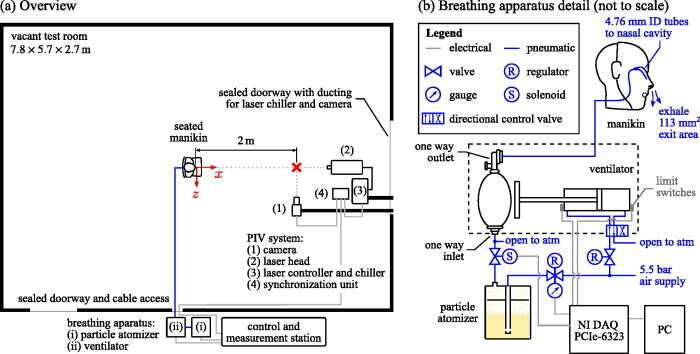Study: Widespread use of better masks can help curb COVID-19 indoors

A new study is highlighting a need for widespread use of better face masks and the importance of good ventilation to mitigate the spread of COVID-19 indoors.
Engineering researchers at the University of Waterloo performed experiments using a mannequin to simulate a seated person breathing in a large room. The studies showed a significant buildup over time of aerosol droplets—exhaled droplets so tiny they remain suspended and travel through the air—despite the use of common cloth and blue surgical masks.
"There is no question it is beneficial to wear any face covering, both for protection in close proximity and at a distance in a room," said Serhiy Yarusevych, a professor of mechanical and mechatronics engineering and the leader of the study. "However, there is a very serious difference in the effectiveness of different masks when it comes to controlling aerosols."
Previous research has found that aerosols dispersed by infected people are a source of transmission of the SARS-CoV-2 virus that causes COVID-19, even outside the two-meter social distancing zone widely recommended by public health officials.
The study showed that most common masks, primarily due to problems with fit, filter about 10 percent of exhaled aerosol droplets. The remaining aerosols are redirected, mostly out the top of the mask where it fits over the nose, and escape into the ambient air unfiltered.
By contrast, higher-quality, more expensive N95 and KN95 masks filtered more than 50 percent of the exhaled aerosols that can accumulate indoors and spread the COVID-19 virus when inhaled by other people.
Yarusevych, principal investigator in the Fluid Mechanics Research Lab, said the much greater effectiveness of N95 and KN95 masks versus cloth and surgical masks makes a compelling case they should be worn in indoor settings, such as schools and workplaces, as much as possible.
"A lot of this may seem like common sense," he said. "There is a reason, for instance, that medical practitioners wear N95 masks—they work much better. The novelty here is that we have provided solid numbers and rigorous analysis to support that assumption."
Experiments also quantified the impact of ventilation systems, which circulate and replace air in rooms, on the accumulation of aerosols. Even modest ventilation rates were found to be as effective as the best masks in reducing the risk of transmission.
Ideally, Yarusevych said, the evidence shows that high-quality masks and proper ventilation should be used in combination to mitigate the threat posed by indoor aerosol accumulation as much as possible.
The study, Experimental investigation of indoor aerosol dispersion and accumulation in the context of COVID-19: Effects of masks and ventilation, appears in the journal Physics of Fluids.
More information: Yash Shah et al, Experimental investigation of indoor aerosol dispersion and accumulation in the context of COVID-19: Effects of masks and ventilation, Physics of Fluids (2021). DOI: 10.1063/5.0057100
Journal information: Physics of Fluids
Provided by University of Waterloo





















